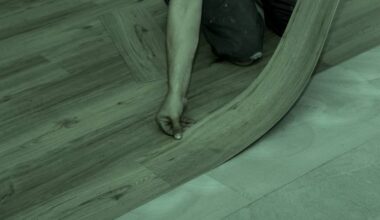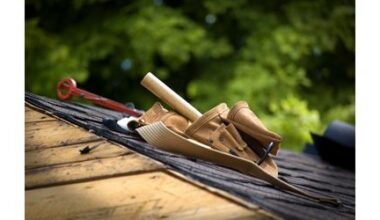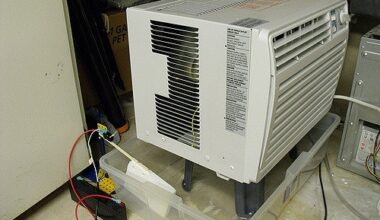Drain tiles have been in use for at least 2,000 years, and the pipes were once made of clay, similar to floor tiles, which may explain the name’s origin. Plastic corrugated pipe is less expensive and easier to install. The cost of drain tile installation per foot is discussed in this blog, along with instructions on how to install drain tile in the yard and basement below.
An additional name for a drain tile is a French drain, trench drain, blind drain, rubble drain, perimeter drain, or land drain. It is a trench that directs groundwater away from a specific area, such as a foundation or basement. A drain tile can be installed indoors or outdoors and is typically installed underground. Depending on several factors, including whether you do it yourself or hire a professional, the cost per foot of drain tile installation in your yard or basement varies.
Drain Tile Installation Cost
A landscaper or other professional can install outdoor drain tiles for as little as $10 to $30 per foot. The average cost is around $25 per foot depending on the depth and width of the drain tile installation. A drain tile 30 feet to 50 feet long, for example, may cost $750 to $1,500.
Do-it-Yourself Installation
You can install a drain tile on your own, but the project requires manually digging trenches with a hoe and pick axe or renting digging equipment such as a ride-on trencher, compactor, or small backhoe. The materials you’ll need are reasonably priced and not too difficult to work with.
Crushed rock, for example, typically costs $4 or less per square foot, and daily compactor rental costs $85 or less. A half-day trencher rental ranges from $80 to $100. A backhoe can be rented for $200 or less per day.
Additional Costs
Interior drain tiles are required when other basement waterproofing methods, such as wall and floor sealers, fail. Tiles for interior drains can cost anywhere from $2,000 to $6,000. A sump pump basin, a device that acts as a flood prevention measure, raises the price from $10,000 to more than $15,000. A drain tile can direct excess water into a wide area, but you may need a dry well to hold the water until it gradually filters into the soil.
A do-it-yourself dry well can cost anywhere from $5 to $400, but having one installed professionally can cost anywhere from $300 to $5,000. Do-it-yourself rain gardens, which are shallow depressions that keep clean rainwater out of the sewer system, can cost between $100 and $750 for 150 square feet.
What You Need for Drain Tile Installation System
Stop calling it a drain tile system and start calling it a French drain right away. If you Google that, you’ll find a wealth of information that you can apply to your specific situation. French drains are common, and landscapers frequently use them to solve drainage issues.
The first thing you’ll need is a good shovel or, better yet, a trencher to dig a trench deep and wide enough to accommodate a 4-inch perforated drainpipe. You’ll also need gravel to surround the pipe (ideally 3/4-inch drain rock), sand, and landscape fabric to keep debris out of the drain.
You can also use gravel-free French drain piping, which is made of perforated pipe surrounded by polystyrene aggregate and covered in a filter cloth. If you opt for the gravel-free system, you don’t need to buy gravel or sand. You still need to dig a trench, however, so let’s get started.
Yard Drain Tile Installation
Here is how to carry out drain tile installation in the yard:
#1. Digging the Trench for a French Drain
One of the most important things to remember when digging a trench for a French drain is to make the trench deep and wide enough to accommodate the pipe, gravel, and a covering layer of sand or topsoil. It’s also critical to maintain a constant slope toward the runoff point and avoid upward blips that could cause runoff to collect in the pipes.
The trench should be at least 12 inches wide and 8 to 24 inches deep, depending on the soil and topography. From the drainage point to the runoff point, the depth of the trenches will vary due to the trench slopes. The minimum recommended slope is 1% or about 1/4 inch per foot. That means that if a 20-foot trench is 18 inches deep at the drainage point, it must be at least 23 inches deep at the runoff point.
Digging a trench that wide and deep by hand is a lot of work, so if you’re going to use shovels, you should probably get some help. Consider renting a trencher if you need to trench across your entire yard or if the soil is rocky and difficult to dig. It will complete the task in a fraction of the time it would take you to complete it by hand.
#2. Laying the Drainpipe
A 4-inch black corrugated perforated drainpipe or a white perforated pipe with larger 1/2-inch drain holes are both acceptable options. The drain functions by absorbing water from below, so you lay the pipe with the perforations facing down. If your drain is longer than a single pipe or roll of piping, or if the trench has a sharp curve, you will need to buy the proper couplings and elbows.
Fill the trench with about 2 inches of gravel before laying the pipe, then cover it with a layer of filter cloth or landscape fabric to discourage weed growth. Some experts recommend wrapping the pipe in filter cloth to keep out roots that will be drawn to the nutrients flowing through it. Lay the pipe in the trench, then backfill with gravel to grade, or about 2 inches below grade if you prefer, so you can top off with dirt and hide the drain.
If you choose gravel-free piping, you can skip all of the gravel-related steps. Simply place the pipe in the trench, making sure that the top of the gravel-free covering is at least 2 inches below grade, and backfill with dirt.
#3. Install at least one drain.
Despite your best efforts to keep roots from nearby trees and shrubs out of the pipes, they will almost certainly find their way in sooner or later. Install at least one cleanout fitting if you don’t want to dig up the drain to clean the pipes. Install two, one at each end of the drain system, for maximum effect.
Cleanout fitting tees have easy-to-remove caps and terminate at or slightly above grade. You can often clean the pipes by inserting a garden hose with a jet nozzle through one of the cleanout ports if the drain system becomes clogged and water begins to pool on the ground. If the blockage is too stubborn for a jet of water, you can use an auger.
Drain Tile Installation in Basement
First, ensure that rainwater is directed away from the house’s foundation. Go outside while it’s raining and observe how the water flows off the roof and onto the ground around the house to identify problem areas. Pay special attention to areas below roof valleys where there is a lot of water runoff.
Soil should be added to slope the ground away from the foundation. For the first 4 to 6 feet, the grade should slope at least 1 inch per foot. If necessary, direct roof water away from the house using gutters and downspouts.
If these measures fail, you may need to install an interior drain tile and sump basin in the basement. The corrugated floor edging collects and directs water that is seeping under the foundation wall and running down the inside of the wall to the drain tile. Water is transported from the drain tile to the sump basin, where it is automatically discharged by an electric pump.
The materials are relatively cheap, but the labor is enormous. You’ll need to jackhammer out a perimeter strip of concrete, haul out concrete rubble and dirt, bring in gravel, and then patch the concrete floor. This is sweaty, dusty work. For this work, professionals charge several thousand dollars.
Steps to drain tile installation in the basement
Follow these steps to carry out drain tile installation in the basement:
- Cut an 18-inch strip of concrete away from the walls to expose the footing and underlying dirt. For this job, rent an electric jackhammer.
- Dig an 8-inch-deep, 12-inch-wide trench alongside the footing.
- Choose a location for the sump basin (an unfinished room is best). An electrical outlet for the sump pump and a way to run the discharge pipe outside is required. Remove the extra floor, dig a hole, and install the basin so that the top is flush with the concrete floor.
- Fill the trench with about 2 inches of gravel (use crushed stone or river rock). Push the end of the perforated drain tile through the sump basin knockout. With the drain tile installation, attempt to make a complete loop of the basement and run both ends into the basin. Fill the trench and the area around the basin with more gravel, leaving 3 to 4 inches of concrete.
- Suspend 6-mil polyethylene sheeting from the foundation wall’s top. Leave the bottom edge dangling just above the footing.
- Install the floor edging around the footing. Make sure the polyethylene is running behind it.
- Lay a strip of polyethylene on top of the gravel and pour concrete to patch the floor.
- Install the sump pump in the basin and connect the discharge pipe to the outside. Make sure the pipe is at least 6 feet away from the foundation to avoid dumping water against the foundation wall.
Basement Drain Tile Installation Cost
Depending on the size of the basement’s perimeter and the number of sump pumps, drain tile installation costs between $4,000 and $12,000, or $40 and $85 per linear foot. It is not always necessary to use a full-perimeter drain tile system.
Things to Consider Before Drain Tile Installation
The water you’re draining from your yard has to go somewhere, and ideally, that somewhere should be a hill that slopes toward a natural waterway or a municipal thoroughfare with sewer grates that can catch the water. Never direct water toward a neighboring property and blame them for your drainage problem. Furthermore, avoid directing water toward a septic leach field, where it could disrupt the septic system.
If your property lacks a suitable runoff area, you may need to build a dry well to catch and hold the water while it soaks into the ground. The dry well is typically located at the lowest point on the property and should be large enough to hold the water that is likely to flow into it until it can percolate into the ground. Some municipalities require dry wells in low-lying areas, so you may already have one on your property.
Another practical issue to consider before beginning the installation is that you will most likely have a large amount of dirt left over after backfilling the trench. You could use this dirt to fill raised flowerbeds or to level an area near the house for a new patio. If you plan, you’ll be able to transport it to where you need it while the drain project is underway, potentially saving you a lot of time and effort in the future.
How deep should the drain tile be installed?
Typical range (3–4 feet). For agricultural drainage, typical tile depths (W) are 3-4 feet. The depth of the drains influences the hydraulic head (h) of the water-driving flow to the drains as well as the distance available for water flow between the drains and the restrictive layer.
How are drain tiles installed?
The interior drain tile system collects and directs water under and around your basement to the sump pit. You can install an interior system in three ways: above the concrete slab, within the slab’s edge, or below the slab. Under your basement floor, a perforated pipe is laid in a bed of washed stone.
What do you put under the drain tile?
Lay the pipe in the trench, then backfill with gravel to grade, or about 2 inches below grade if you prefer, so you can top off with dirt and hide the drain. If you choose gravel-free piping, you can skip all of the gravel-related steps.
How do you install outdoor drain tile?
- Trench digging
- Fill in the trench’s bottom.
- Install the drainpipes
- Install cleanouts.
What is the spacing of tile drains?
3–6 feet is the average drain depth. 30 to 100 feet is the typical spacing. Balance depth/spacing to save money. Coverage must be greater than 2.5 feet.
What is the minimum slope for drain tile?
The trench must be at least 16″ deep (4″ pipe) and wide enough to fit the pipe. It must also have a minimum slope of 1%.
Related Articles
- BEST VACUUM FOR TILE FLOORS: 5 Top Picks In 2023
- DEEP CLEANING CHECKLIST: What Is Included In Deep House Cleaning?
- TOILET DRAIN CLEANER: Best Toilet Drain Cleaners In 2023
- HOW TO DRAIN POOL: Step-By-Step Guide
- Best Tile For Shower Walls






